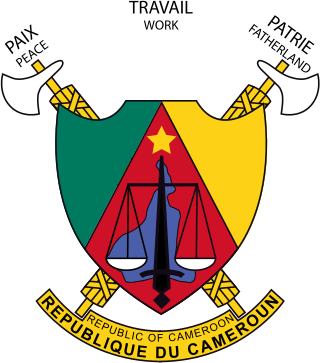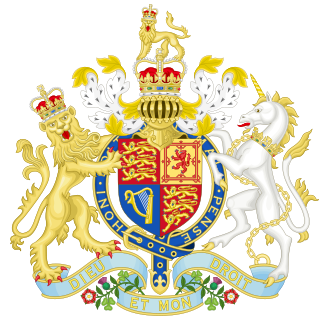At the crossroads of West Africa and Central Africa, the territory of what is now Cameroon has seen human habitation since some time in the Middle Paleolithic, likely no later than 130,000 years ago. The earliest discovered archaeological evidence of humans dates from around 30,000 years ago at Shum Laka. The Bamenda highlands in western Cameroon near the border with Nigeria are the most likely origin for the Bantu peoples, whose language and culture came to dominate most of central and southern Africa between 1000 BCE and 1000 CE.

The politics of Cameroon takes place in the context of an electoral autocracy where multi-party elections have been held since 1992, the ruling party wins every election, and Paul Biya has been president since 1982. Since Cameroon's independence in 1960, it has been a single-party state and ruled only by two presidents: Ahmadou Ahidjo and Paul Biya. Political opposition are repressed and elections are manipulated in favor of the ruling party.

A unitary state is a (sovereign) state governed as a single entity in which the central government is the supreme authority. The central government may create or abolish administrative divisions. Such units exercise only the powers that the central government chooses to delegate. Although political power may be delegated through devolution to regional or local governments by statute, the central government may alter the statute, to override the decisions of devolved governments or expand their powers.

British Cameroons or British Cameroon was a British mandate territory in British West Africa, formed of the Northern Cameroons and Southern Cameroons. Today, the Northern Cameroons forms parts of the Borno, Adamawa and Taraba states of Nigeria, while the Southern Cameroons forms part of the Northwest and Southwest regions of Cameroon.

Paul Biya is a Cameroonian politician who is the second president of Cameroon since 1982, having previously been the fifth prime minister from 1975 to 1982. As of 2025, he is the second-longest-ruling president in Africa and the longest consecutively serving current non-royal national leader in the world and the oldest head of state in the world.

Ahmadou Babatoura Ahidjo was a Cameroonian politician who was the first president of Cameroon from 1960 until 1982. He was previously the first prime minister of Cameroon from the country's independence in January 1960 until May of that same year following the creation of the presidency.

The national flag of Cameroon was adopted in its present form on 20 May 1975 after Cameroon became a unitary state. It is a vertical tricolour of green, red and yellow pales, with a yellow five-pointed star in its center. There is a wide variation in the size of the central star, although it is always contained within the inside stripe.

The Republic of Cameroon is divided into ten regions.

Under the current Constitution of Cameroon, the prime minister of Cameroon is a relatively powerless position. While the prime minister is officially appointed to be the head of government, the president retains most of the executive power and can fire the prime minister at will.

Elections in Cameroon occur in a system of electoral autocracy, as the ruling party manipulates elections and represses political opposition.

The Southern Cameroons was the southern part of the British League of Nations mandate territory of the British Cameroons in West Africa. Since 1961, it has been part of the Republic of Cameroon, where it makes up the Northwest Region and Southwest Region. Since 1994, pressure groups in the territory claim there was no legal document in accordance to UNGA RES 1608(XV) paragraph 5, and are seeking to restore statehood and independence from the Republic. They renamed the British Southern Cameroons as Ambazonia.

The Local Government (Wales) Act 1994 is an Act of the Parliament of the United Kingdom which amended the Local Government Act 1972 to create the current local government structure in Wales of 22 unitary authority areas, referred to as principal areas in the Act, and abolished the previous two-tier structure of counties and districts. It came into effect on 1 April 1996.

The Constitution of Cameroon is the supreme law of the Republic of Cameroon. Adopted in 1972, it is Cameroon's third constitution. The document consists of a preamble and 13 Parts, each divided into Articles. The Constitution outlines the rights guaranteed to Cameroonian citizens, the symbols and official institutions of the country, the structure and functions of government, the procedure by which the Constitution may be amended, and the process by which the provisions of the Constitution are to be implemented.

The National Day of Cameroon, also known as Unitary State Day, is celebrated annually on 20 May. In a national referendum on 20 May 1972, Cameroonians voted for a unitary state as opposed to the existing federal state. The United Nations Trust Territory known as French Cameroun achieved independence from France on 1 January 1960, and British Southern Cameroons changed status from a Trusteeship under British administration to a federated state within Cameroon on 1 October 1961. The government chose 20 May as Cameroon's National Day to commemorate President Ahmadou Ahidjo's abolishment of the federal system of government in favor of a unitary country in 1972.
Ousmane Mey is a Cameroonian political figure who was Governor of the North Province of Cameroon from 1972 to August 1983. As of 2007, he is Chairman of the Board of the National Social Insurance Fund (CNPS).

The Vice President of Cameroon was a political position in Federal Republic of Cameroon. It was abolished in 1972 when the new constitution created unitary state United Republic of Cameroon. The Vice President of Cameroon was English-speaking and the President of Cameroon was French-speaking during the existence of the office.

The Anglophone problem is a socio-political issue in the modern Republic of Cameroon, rooted in the country's German, British, and French colonial legacies. Anglophone (English-speaking) Cameroonians form a minority population of around 16 percent, mainly from the Northwest and Southwest regions that formerly constituted the Southern Cameroons, part of the former British Cameroon colonies. These Anglophone regions were formerly controlled by Britain as a mandate of the League of Nations, and then as a United Nations trust territory. During the Foumban Conference of 1961, territories with different colonial legacies were finally united into one state.
Humanist Democratic Centre was a Christian democratic and centrist French-speaking political party in Belgium. The party originated in the split in 1972 of the unitary Christian Social Party (PSC-CVP) which had been the country's governing party for much of the post-war period. It continued to be called the Christian Social Party until 2002 when it was renamed the Humanist Democratic Centre. It was refounded as Les Engagés in 2022.

West Cameroon was a federated state within the Federal Republic of Cameroon that existed between 1961 and 1972. It was formed on 1 October 1961 when the formerly British-administered Southern Cameroons was integrated into the Republic of Cameroon to form the Federal Republic of Cameroon and abolished on 2 June 1972 when Cameroon became a unitary state. The region now falls within the Northwest Region and Southwest region of Cameroon.

East Cameroon was a federated state within the Federal Republic of Cameroon that existed between 1961 and 1972. It was formed on 1 October 1961 when the independent Republic of Cameroon was federated with the formerly British-administered Southern Cameroons to form the Federal Republic of Cameroon and abolished on 2 June 1972 when Cameroon became a unitary state.











